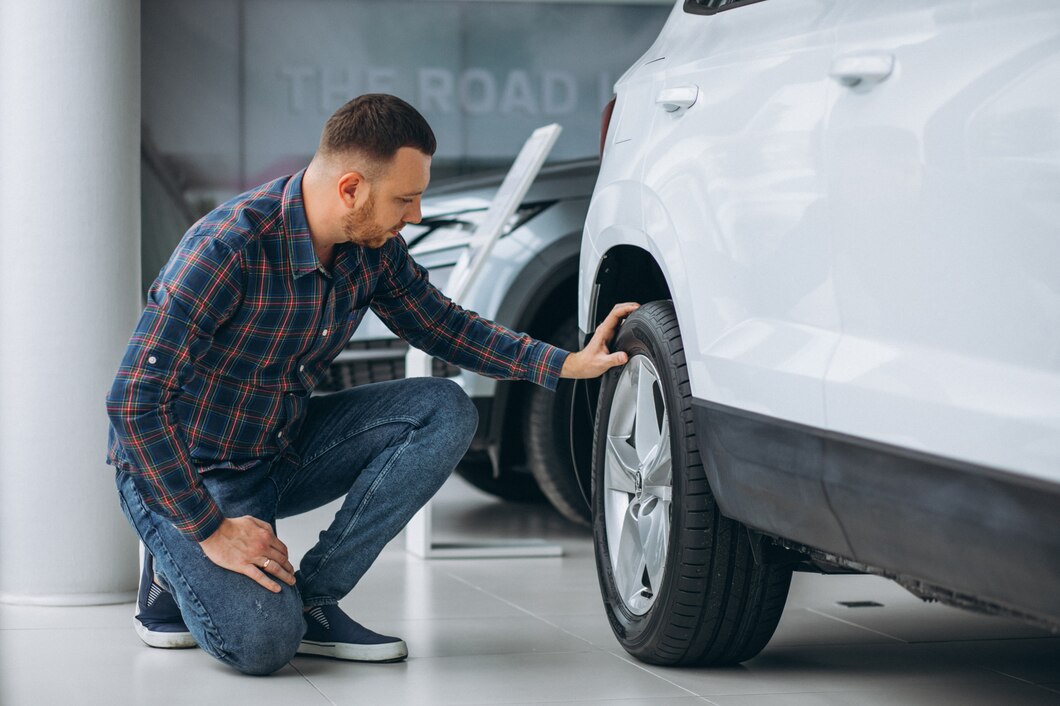Buying a second-hand car can be a rewarding experience, offering affordability and a wide range of options. However, ensuring that you choose a vehicle in good condition requires thorough inspection and evaluation. Here’s a step-by-step guide to help you assess the condition of a second-hand car effectively:
1. Exterior Inspection
- Paint and Body: Check for signs of rust, dents, scratches, or paint discoloration. Look closely at panel alignment to ensure consistency, which can indicate if the car has been in an accident.
- Tires: Inspect the tire tread depth using a tread gauge or the penny test (inserting a penny into the tread with Lincoln’s head upside down; if you can see all of Lincoln’s head, the tread is too low). Uneven wear patterns may indicate alignment issues.
- Lights and Lenses: Ensure all exterior lights (headlights, taillights, turn signals) are functional and free of cracks. Check the condition of lenses for clarity and damage.
2. Interior Examination
- Seats and Upholstery: Check the condition of seats, including any tears, stains, or signs of excessive wear. Inspect the dashboard for cracks and the interior trim for any loose or broken parts.
- Electrical Components: Test all electronic components, including air conditioning, power windows, door locks, radio, and navigation systems (if applicable). Ensure they function correctly without unusual noises or delays.
- Odometer and Controls: Verify the odometer reading against service records to ensure mileage consistency. Check all dashboard warning lights illuminate and then turn off after starting the engine.
3. Under the Hood Inspection
- Engine Compartment: Inspect for leaks (oil, coolant, or other fluids) and check fluid levels (oil, coolant, brake fluid). Look for signs of corrosion on battery terminals and check the condition of belts and hoses for cracks or wear.
- Engine Start-up: Start the engine and listen for unusual noises such as rattling, grinding, or excessive vibrations. Note any smoke from the exhaust, which could indicate engine problems.
4. Mechanical Assessment
- Test Drive: Take the car for a test drive on different road types (city streets, highways) to evaluate handling, braking, and acceleration. Pay attention to steering responsiveness and any unusual vibrations or noises.
- Braking System: Test the brakes for effectiveness and consistency. Listen for squealing noises or pulsations, which could indicate worn brake pads or rotor issues.
5. Vehicle History and Documentation
- Service Records: Review the car’s service history and maintenance records. A well-documented maintenance schedule indicates the owner’s care and can provide insight into potential future maintenance needs.
- Vehicle Identification Number (VIN) Check: Use the VIN to check for any reported accidents, title issues, or recalls through resources like Carfax or AutoCheck.
6. Professional Inspection
- Mechanic’s Evaluation: Consider having a trusted mechanic perform a pre-purchase inspection (PPI). They can provide a detailed assessment of the car’s mechanical condition, identifying hidden issues not apparent during a basic inspection.
Evaluating the condition of a second-hand car requires attention to detail and a systematic approach. By following these steps—checking the exterior and interior, inspecting under the hood, assessing mechanical performance, reviewing documentation, and considering a professional inspection—you can make an informed decision and ensure that the second-hand car you purchase meets your expectations in terms of reliability, safety, and value. Taking the time to thoroughly evaluate the vehicle upfront can save you from costly repairs and maintenance down the road, making your purchase a satisfying and worthwhile investment.











